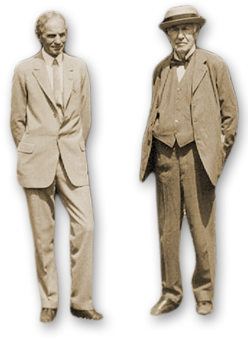Cycad Spa Day
March 13, 2023
By Horticultural Specialist, Karen Maxwell
Early in February, a world-renowned cycad specialist generously devoted an entire day toward the restoration of our cycad collection, which was in need of a professional make-over. Situated on the riverside of the Estates, the collection consists of approximately 20 specimens of ancient plants.
Cycads, sometimes called “living fossils” are a green link back to the age of dinosaurs – more than 200 million years ago. Fossils of cycads have been identified from Alaska to Antarctica and these plants fall somewhere between ferns and seed-bearing plants. The fossil fuels that power your automobile most likely contain the ancient matter of decayed cycads.
Cycads are gymnosperms, meaning they produce naked seeds such as the cones of pine trees. All species of cycads are dioecious – there are distinct male and female plants. Presently, there are 300+ species worldwide; the Estates is fortunate to have 22 species that include a Florida native as well as species from Africa, Central America, North America, and Asia. Four genera of cycads are represented and all species in the genera Encephalartos are endangered in their indigenous locations throughout Africa.
Many cycads resemble palms; however, they have nothing in common, and the often so-called “Cardboard Palm” is actually a cycad and correctly called a Cardboard plant in the vernacular. Similar to palms, cycads have a single, unbranching trunk, and some may produce multiple trunks. Additionally, they are evergreen and sport fronds or leaves with leaflets in a pinnate leaf arrangement. While most cycads cannot withstand flooding, fortunately the species in our collection are salt tolerant and for the most part, survived the harsh weather elements delivered by the recent hurricane. Around the world, cycads frequently grow in harsh conditions, along seashores, dunes and rainforests. The most salt tolerant and flood tolerant species is Zamia furfuraceae, the Cardboard Plant native to shores of Mexico.
World-renowned cycad specialist, Chip Jones of Jones Landscaping Nursery (www.cycadflorida.com) travelled from his Moore Haven Nursery, along with an assistant,
and undertook a full day of treacherous pruning and trimming to remove hurricane ravaged fronds and expose the beautiful trunks of the Edison Ford Cycad collection.
The pruning and clean-up that Chip executed could only be performed by someone extremely knowledgeable in cycad growth and cycad characteristics. Working underneath a cycad commonly called “Ferocious Blue” (Encephalartos horridus) hints at the sharp spines that are on the tips of their fronds. Watching Chip work quickly and precisely, often on a ladder, with his chainsaw and agave knife, we recognized that this was not a job for amateurs or hand pruners.
Our entire department joined in eagerly, carrying away the load after load of pruned fronds while peppering Chip with questions about cycads, all of which he graciously answered. Clearly, he had to focus closely on his work, careful not to injure the trunks of the cycads which could be fatal.
The genus of Encephalartos cycads are sometimes called “Bread Palms” as their trunks were once ground up make flour by indigenous people. Today, one must consider all parts of the cycads, especially their seeds, poisonous or toxic to people and animals. An outstanding landscape specimen, the Encephalartos species are frequently grown for their enormous cones, but due to their sharp spines, these plants are best located away from pedestrian areas and careful consideration should be given to the plant’s ultimate size to avoid having to transplant later.
How have cycads managed to outlive so many other species on our planet? No one knows for sure, but one answer is in their unique roots. These roots are called coralloid roots. As specialized roots, they are able to use blue-green algae bacteria to capture air-borne nitrogen and convert into useable soil borne nitrogen. This survival technique has provided cycads that grow in nutrient deficient soils (like in Florida) a winning survival strategy all their own.
The most well-known cycad to Floridians is the Coontie (Zamia floridana syn. Zamia integrifolia), native from Florida to South America. Regular readers may recall my article last month where I wrote about the Coontie as a host plant to the beautiful Hairstreak Atala butterfly.
We have nicknamed our collection “Cycad Island” and we will soon be adding additional Dioons and Encephalartos to the grouping. As the hurricane stripped the good mulch and dropped a load of sand at the bases, our work now is to treat these rugged and photogenic plants following their spa day at the expert hands of Chip Jones, with new layers of organic soil and finish with a nice mulch dressing.
Chip Jones has co-authored a manual on cycad care entitled “Cycad Cultivation and Landscaping” and he regularly travels internationally in search of new species to bring to his Moore Haven nursery, which is open to the public by appointment only. We are extremely grateful for Chip Jones’ time, his knowledge and donated plants as we grow this historic collection outside the front porch of Thomas Edison’s home.
All photographs courtesy of Karen M. Maxwell


